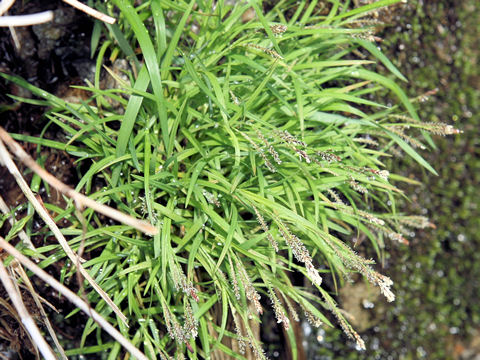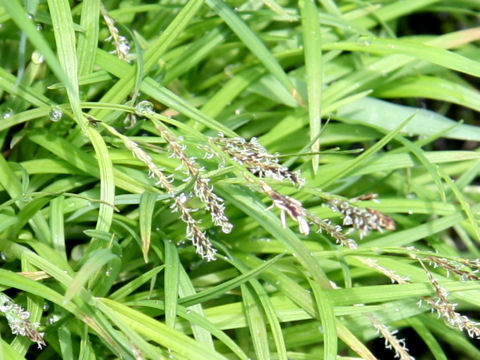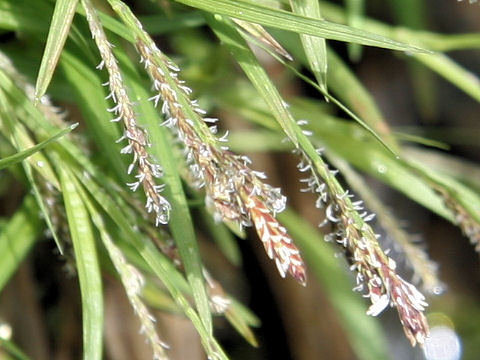 |






|

|
íªÌ{BAꧼȼɪzµÄ¢Ü·BÍÝÌâãÈÇɶ¦A³ÍPT`SOZ`ÉÈèÜ·BtÍP`Q~Ìü`ÅA´ç«ܷBS©çT²ëAÔsðLεÄÔð穹ܷBY¬äÍõòÌ éFÅA·³PT`QO~ èA¸¶µÜ·B¬äàõòÌ éFÅA·³T`PO~A¤¶µÜ·BÊEÍóâj`Å·B
|

|
JcOTÈXQ®ÌíνNÅAw¼Í Carex miraBp¼Í èܹñB
|

|
The "Sawa-hime-suge" (Carex mira) belongs to Cyperaceae (the Sedge family). It is an evergreen perennial herb that is native westward from western Shizuoka prefecture of Honshu, Japan. This herb grows on rock of river banks and can reach 15-40 cm in height. The leaves are linear 1-2 mm wide and textured. The flowers come on the stalks from April to May. The male spikelets are glossy blackish-purple, 15-20 mm long and acrogyrous. The female spikelets are also glossy blackish-purple, 5-10 mm long and pleurogerous. The perigynium is ovate-lanceolate.
|

|
ò§Ãìsu_â»vÉÄA2007N0507úBeB
|


